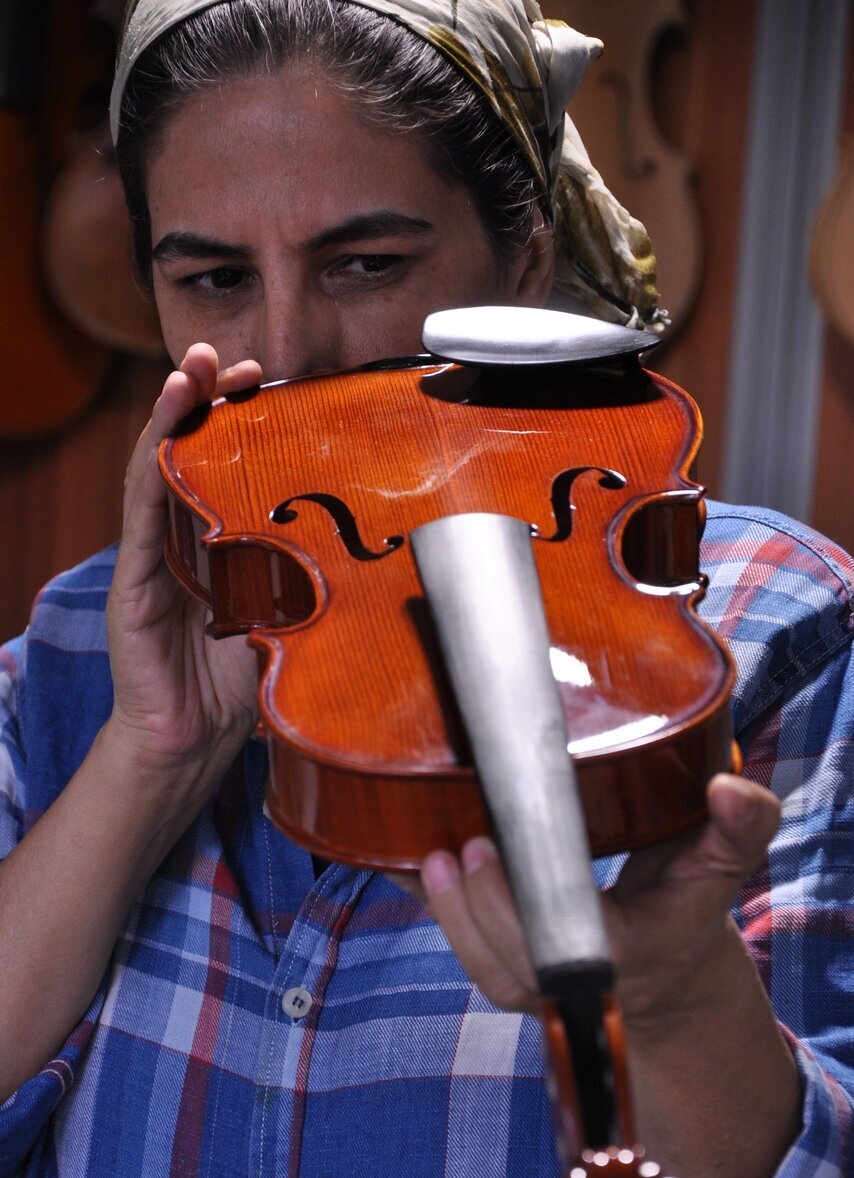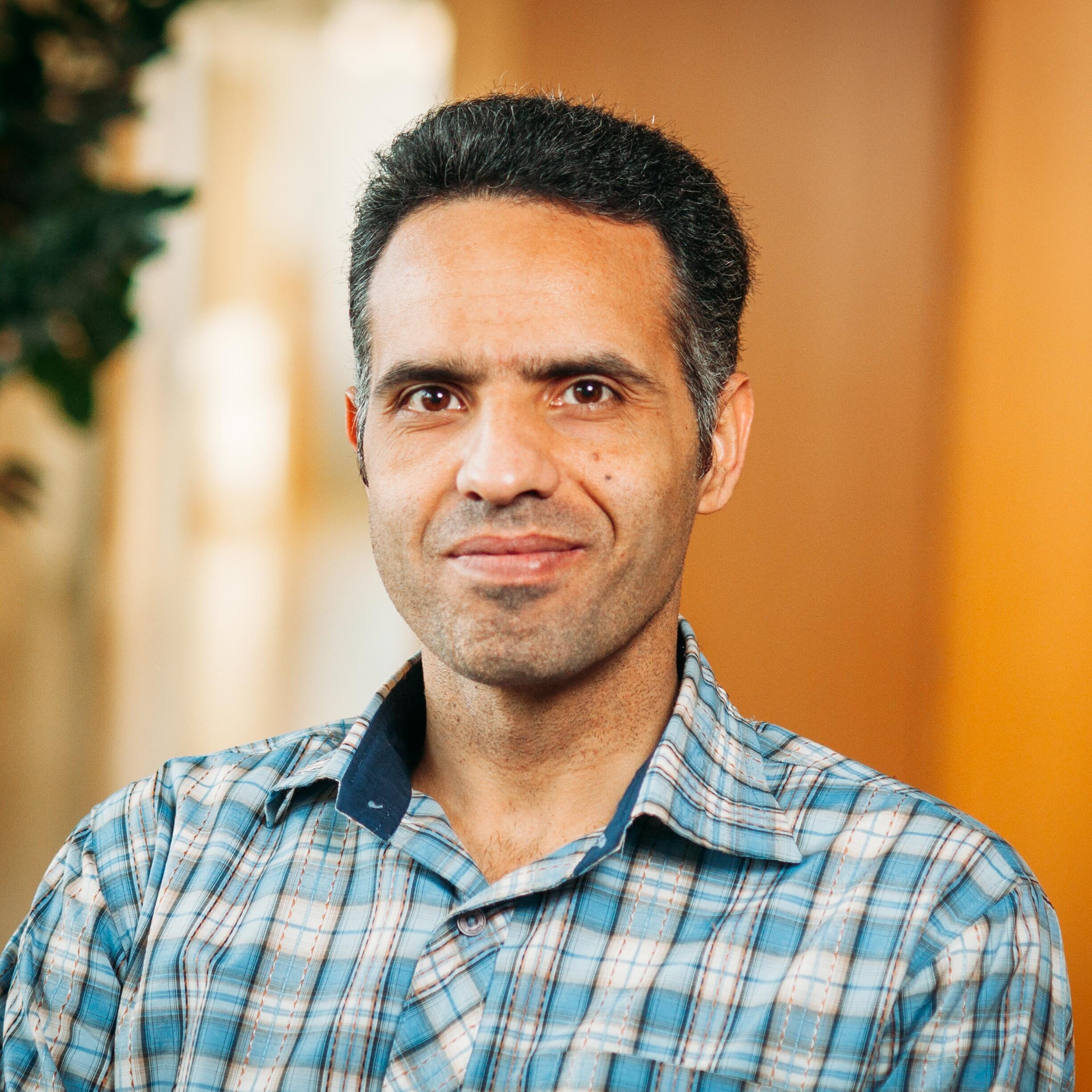The violin maker of Tehran
Iran's clerical leaders have long been opposed to women making music. Nahid Namikhah has gone a step further and become a master at constructing the instruments themselves.
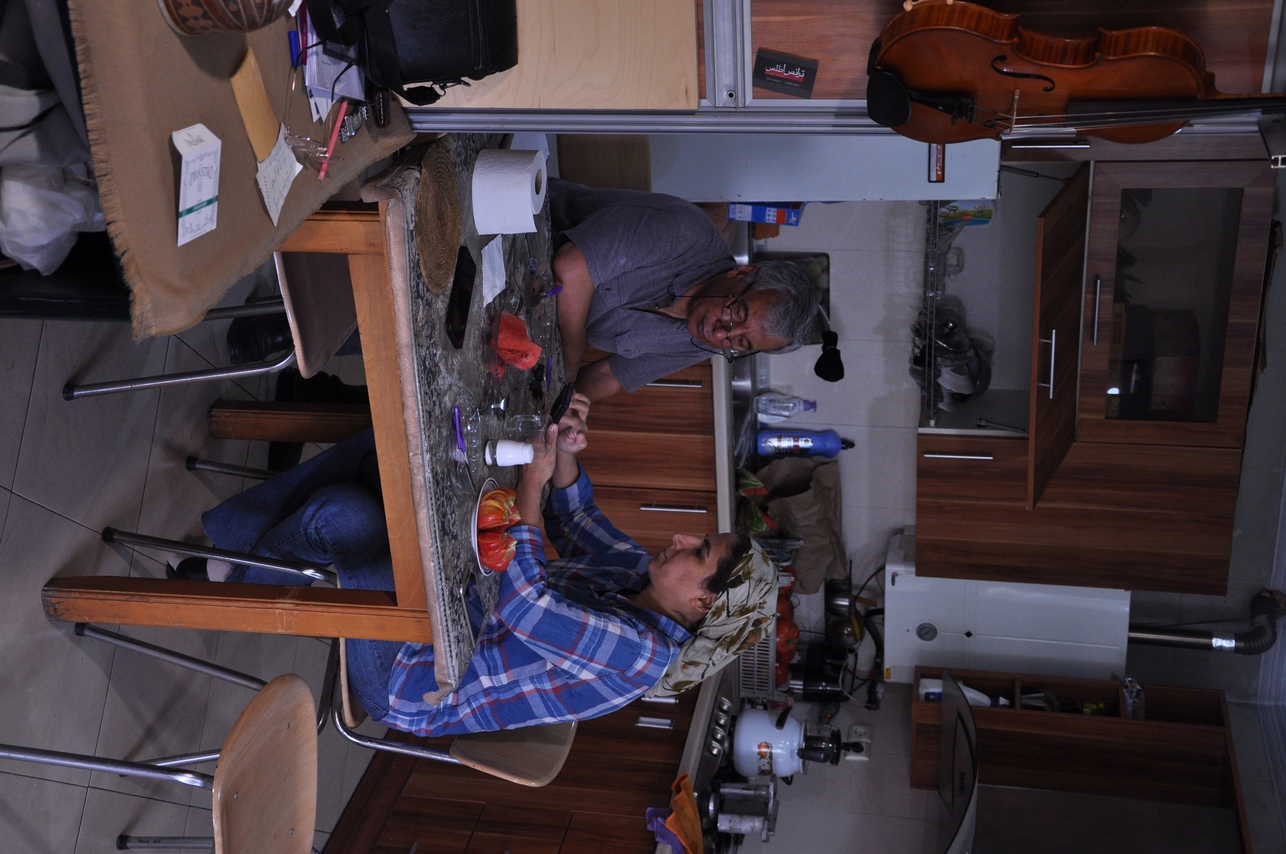
In the northern district of Tehran, Nahid Namikhah meticulously sands the face of an exquisite violin in a workshop filled with the aromas of maple, fir and ebony. “From an early age, I harboured a profound love for music,” she says. “However, under the old-fashioned traditions governing a rural society, I never had the chance to pursue my passion and learn how to play these instruments.” Nahid is a woman in the male-dominated field of instrument making. After 16 years perfecting her craft, she has received a degree of acclaim from cultural institutions in Iran, such as the Organization of Cultural Heritage, Handicrafts and Tourism, but still faces huge social challenges as she seeks acceptance and a supportive community that recognises her achievements.
“I was born in 1981 in Dehdasht, a small town,” she says, pausing in her work to make us tea. “Initially I was fascinated with the piano, but that later shifted towards the Santur, a traditional Iranian hammered dulcimer. But in my community, many people think it’s wrong for women to be active in society, and especially in music.” Historically, Iranian girls have been confined to specific roles within society and their families, with expectations to pursue professions such as teaching or non-paid work such as managing the household. “As I grew up, there was no high school or college music available for me to pursue my passion,” she says. “Unsatisfied with my initial studies in mathematics and physics, I decided to move to Yasuj, the capital of my province, to redo my high school education, this time focusing on architecture.”
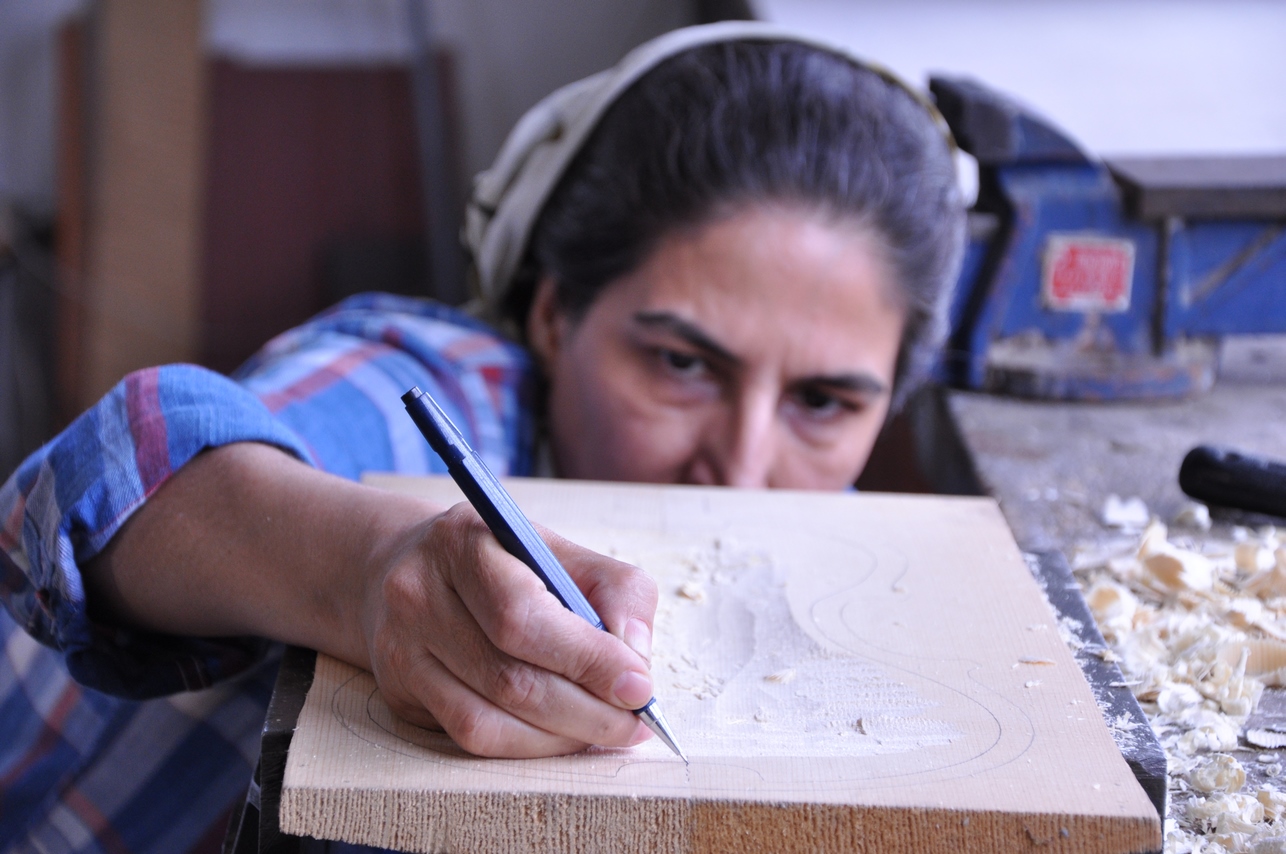
While architecture is acceptable, religious strictures have made music a particularly controversial subject in Iran. While it was formerly strictly forbidden, in more recent times it has been tolerated to a degree in private settings. Currently, Iranian TV does not show any musical instruments on screen during programmes, only allowing the sound of music to be heard without the visual accompaniment of instruments. “During my time in Yasuj, I branched out into theatre,” she says. “However, my family and relatives pressured me to stop performing, expressing concerns about the potential impact on their honour and reputation.” “Later I went to Tehran to study at Soore University and earned a bachelor’s degree in architecture.” She took various jobs in Tehran, working for a construction company and an advertising agency to cover her living expenses, while secretly learning to play the Santur. “In 2008, I came across an advertisement posted by Master Siavash Akbari, a distinguished musical instrument maker, seeking an assistant for his workshop. I applied without hesitation.”
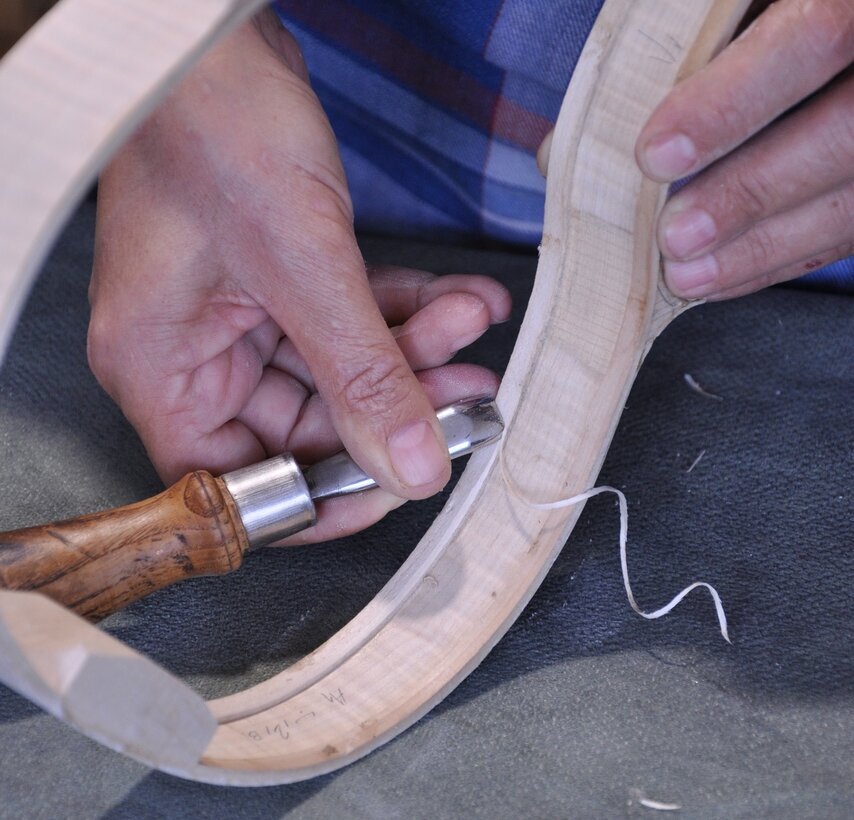
She was lucky. Mr. Akbari also grew up in a small Iranian town and had witnessed the societal limitations placed on women. “I was actively seeking a female apprentice,” he said. “By doing so, I hoped not only to empower women but also to ensure that the art of instrument making would be passed down to future generations.” The workshop they now share is a tribute to the artisans’ expertise and commitment, full of tools for repairing and creating instruments at various stages. Every fine curve and detailed carving in the wood showcases the mastery and accuracy they bring to their work.
Nahid’s new job did not sit well with her family. “They actively opposed my career in violin making as a woman,” she says. As she recalls this she struggles not to cry. Her father travelled to Tehran to visit Mr. Akbari. “He then forced me to return to our hometown. I couldn’t withstand his pressure, staying there unwillingly for two and a half months.”

It took time and perseverance for her to earn her father’s support. “My father’s change of heart was influenced by my insistence on pursuing my career and his fear that I would run away if forced to stay. After witnessing my constant sadness and depression, my family finally allowed me to return to Tehran. However, my father requested that I keep my profession hidden from the rest of our relatives due to concerns over potential backlash and loss of reputation.” Over the following years, she endured immense pressure and stress. “For the first six years of my career, my identity as an instrument maker was kept a secret within the music industry,” she says. “To avoid societal expectations, I sold my creations under Mr. Akbari’s signature.” Even now, the pressure means she is looking to move abroad where her “accomplishments as a barrier-breaking woman in a male-dominated field will be genuinely valued and acknowledged”.
Unfortunately, it seems the misconception about Iranian women’s abilities extends beyond her borders. “When I applied to participate in an exhibition in Germany, the organisers were sceptical that an Iranian woman could be proficient in violin making,” she says. “They requested a video call, during which they could observe my work in the workshop and assess my skills directly.” Nahid is not giving up. “Music plays a significant role in my life and flows within me,” she says before returning to her work.
The Author
More articles of the Author


